|
Trinchero
Napa Valley
Visiting California's Napa Valley, part 7

I had lunch and a tasting with Barry Wiss,
a charming host who had a pile of my wine science books for signing.
Education is a big emphasis at Trinchero, the high-end outpost of
the Sutter Home winery, and here they have a particular focus on
wine and food. Trinchero run an education centre, offering a range
of classes in food and wine that can lead to certification.
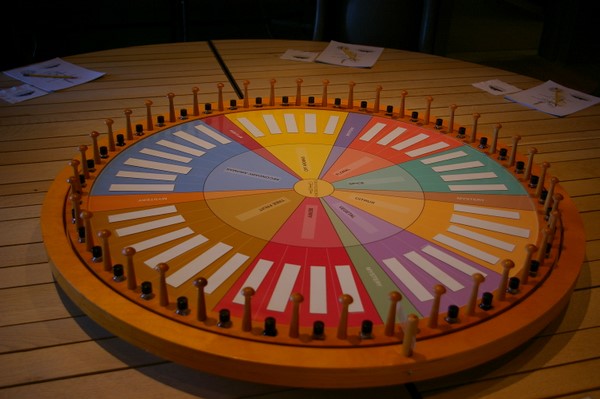
Wine aroma education wheel
The facility I visited in Napa is a new
one, and it is devoted to high-end wines, with a sparkling new
winery and beautifully designed visitor facility and restaurant
offering scenic views of the surrounding vines. It produces just 13
000 cases of Trinchero Napa Valley wines from estate vineyards.
But you are more likely to have heard or
Trinchero’s more commercial wines, including the famous Sutter
Home White Zinfandel. Trinchero is actually the second largest
family-owned wine company in the world (only Gallo eclipses them),
with a 13 million case annual production.
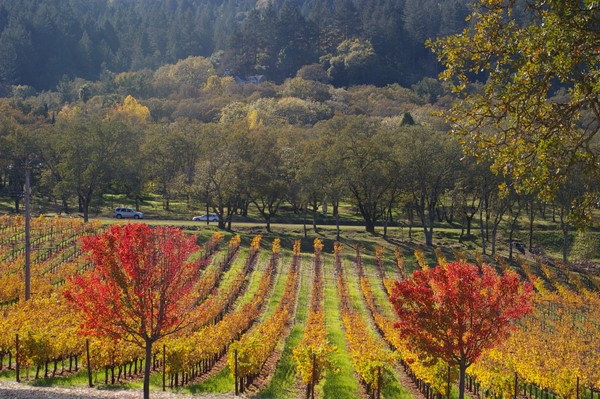
The view from Trinchero
It was in 1920 that the Trinchero family
came to the USA from Italy. Mario was a speakeasy bartender in 1920s
New York, and his older brother John became a broker buying bulk
wine and sending it to the east coast. In his travels he found a
run-down winery, Sutter Home, and bought it in 1947, paying all he
had ($12 000). Here he started making wine on a small scale.
They muddled along, and in 1960 John
handed over winemaking duties to his son Bob. In 1968 Bob made his
first Reserve Zinfandel. In 1972, he took off the free run juice and
made a Zinfandel Rosé, which he named oeil de perdrix in homage to
the classic European style. It wasn't a great success.
But then the Trincheros had a lucky
break. In 1974 two things conspired to change their fortunes. Bob's
Zinfandel Rosé experienced a stuck fermentation, leaving it
slightly sweet. And rather than label it oeil de perdrix he decided
on 'White Zinfandel'. The wine exploded in popularity, and was to
form the basis of the rapid expansion of the Sutter Home brand.
However, not everyone was so keen on this
new creation. Bob Mondavi and the Beringers, neighbours in the Napa,
criticized Bob Trinchero for associating Napa with a wine like this.
[Ironically, Beringer now sell more white Zinfandel than anything
else they make.]
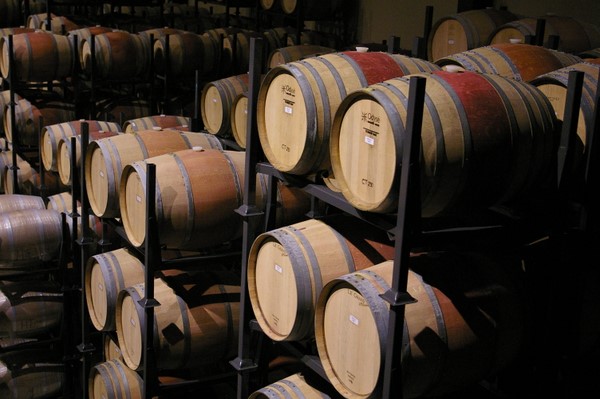
These days, Trinchero is still family
owned. Bob is chairman of the board, with his younger brother Roger
as CEO. President is Bob Torquelson, who’s the first in this post
from outside the family. They are the 10th largest winery in the
world (13 million cases), and the second largest family-owned
winery, after Gallo (80 million cases). Trinchero Napa Valley makes
just 13 000 cases of high-end wine, however.
Green issues are a concern to Trinchero.
Their 250 acres of Napa vineyards are certified Napa Green. Their
7000 acres in Lodi also have sustainable certification. One of the
Lodi wineries is 100% solar power operated, with one of the largest
solar facilities in the state. 'It is a huge capital expenditure,'
says Wiss, 'but we are looking into the future.' Trinchero employ a
full time entomologist who is based in Lodi, and concentrates on the
7000 acres of Trinchero Family Estates vineyard. 'He goes out to
create host environments for predatory insects,' Wiss reports. Wiss
adds that big retailers are helping encourage suppliers to be more
green in their approach. 'Two years ago Sam's Club sent out a letter
request wanting to know our green practices to make sure we are
being responsible in the vineyard.' he says. 'Big retailers have an
interest because a growing part of their consumer base is interested
in it.'
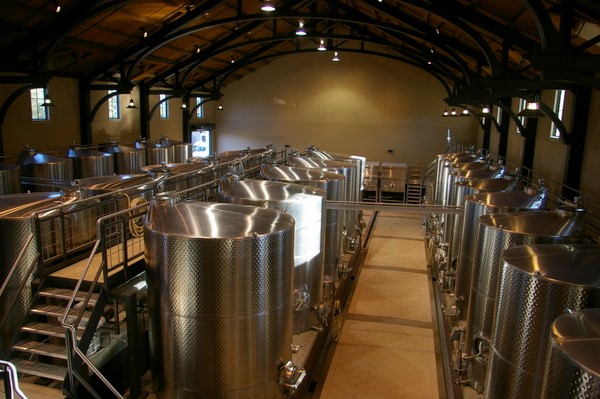
Trinchero have even tried biodynamics in
one of their Napa vineyards. It's a property where they have some
cattle, too—the 23 acre Chicken Ranch vineyard in Rutherford. The
senior VP of vineyard operations actually studies biodynamics about
12 years ago. He and a few other vineyard managers went to class
together to study it. Interestingly, the Cabernet Sauvignon vines in
this vineyard had a bad leafroll virus problem, and within a few
years of farming with biodynamics this was cured.
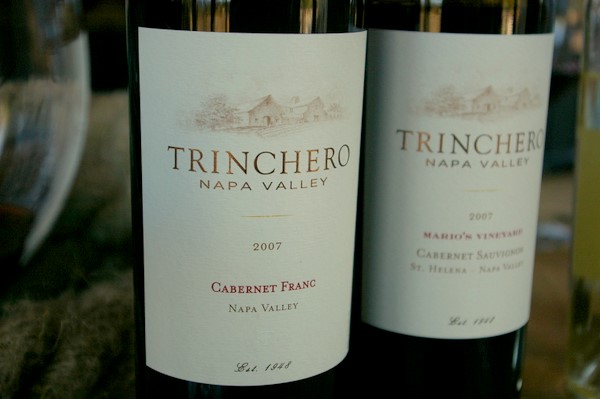
THE
WINES
Trinchero Napa Valley Sauvignon Blanc
Mary’s Vineyard 2008
The only white wine made here, in a facility otherwise devoted
to Bordeaux varieties. Fresh, bright, refined and lemony with some
pithy notes. Very stylish with an attractive creamy texture. Crisp.
88/100 ($19 retail)
Trinchero Napa Valley Mario’s
Vineyard Cabernet Sauvignon 2007
15.3% alcohol. Very sweet and lush with bold berry fruits on the
nose. The palate is super-ripe, intense and spicy. Verging on the
over-ripe with some spicy oak accompanying the concentrated fruit.
91/100 ($50 retail)
Trinchero Napa Valley Cabernet Franc
2007
14.2% alcohol. Very rich aromatics: slightly green with sweet,
lush, ripe berry fruits and lovely spicy, warm, herby undertones.
The palate is lush, ripe and spicy with an Autumnal character to the
dark fruits. Soft, smooth tannins. 92/100
Montevina Zinfandel Port Terra d’Oro
NV, Amador County
19% alcohol. A blend of three vintages. Very rich, fruity and
expressive. Pure, bright, berryish fruit. Some spicy notes. 89/100
NAPA
VALLEY SERIES
 Photos
from Napa Valley Photos
from Napa Valley
 Part
1, Cain Part
1, Cain
 Part 2, Schramsberg Part 2, Schramsberg
 Part 3, Corison Part 3, Corison
 Part
4, Saintsbury Part
4, Saintsbury
 Part
5, Lagier Meredith Part
5, Lagier Meredith
 Part
6, Trefethen Part
6, Trefethen
 Part
7, Trinchero Part
7, Trinchero
 Part
8, Grgich Hills Part
8, Grgich Hills
 Part
9, Cakebread Part
9, Cakebread
Wines
tasted as 11/09
Find these wines with wine-searcher.com
Back
to top
|

